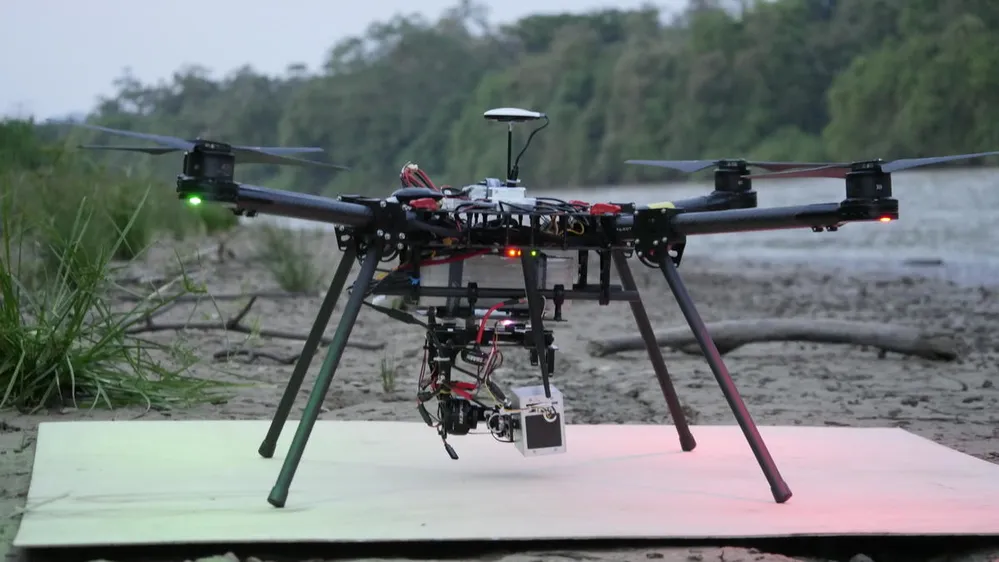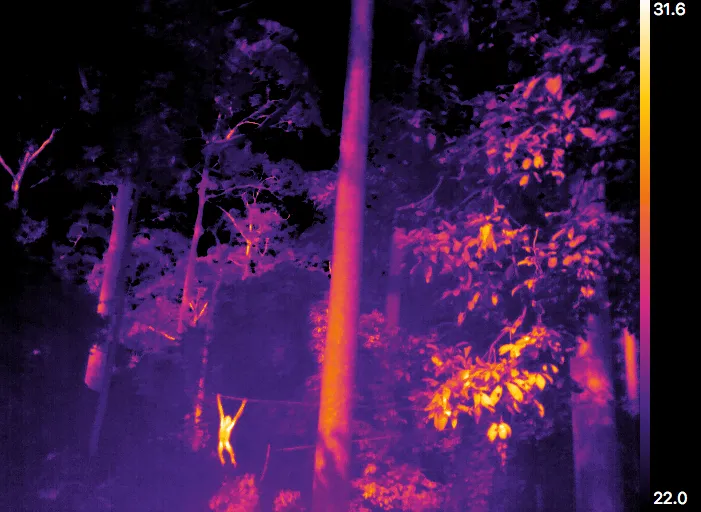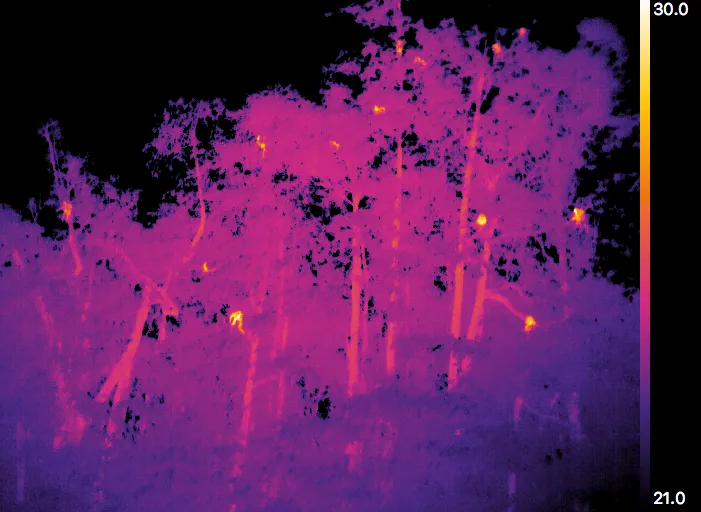A ground-breaking collaboration is harnessing technology used to study stars, to carry out detailed monitoring of orangutan populations in Borneo.
Liverpool John Moores University (LMJU), WWF and the HUTAN orangutan conservation programme came together to examine ways of detecting the great apes in the Bornean forest canopy.
Traditionally, orangutan numbers were estimated by teams on the ground, who would count the number of nests that had been build, which is both costly and time consuming.
Drones can cover large areas of difficult ground quickly and monitor endangered wildlife from above.

The inclusion of thermal imaging technology means that they can detect animals any time of the day or night from their heat signatures.
The field team conducted 28 flights at two sites over six days and successfully spotted 41 orangutans from the air, all of which were confirmed by ground observers.

“We tested the technology on orangutans in the dense tropical rainforest of Sabah in Malaysia,” says astrophysicist Dr Claire Burke. “In thermal images, animals shine in a similar way to stars and galaxies, so we used techniques from astronomy to detect and distinguish them.”
This technology could now be used to better understand and monitor populations of orangutan and other endangered ape species.
The team also spotted a troop of proboscis monkeys during the field trial, which they were able to distinguish from orangutans based on their smaller size.

“As ever more species are decimated, due to human activity such as deforestation, we must embrace and scale up innovative approaches to monitoring wildlife populations, to better protect them for generations to come,” says Nicola Loweth from WWF.
In the future, they hope to automate the process so that species can be distinguished by their heat signature in real time, allowing constant monitoring and potentially helping to stop poaching before it happens.